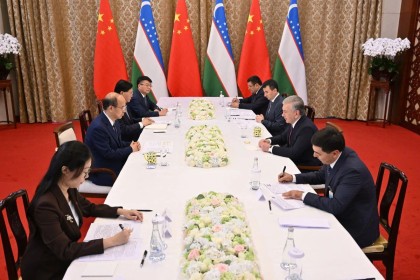The ammonia and urea chemical complex, the construction of which began at the Navoiazot plant in September 2016, released its first urea on December 23, the Uzkimyosanoat said in a statement.
The complex was built by a consortium of Japanese companies Mitsubishi Heavy Industries and Mitsubishi Corporation. The Danish Haldor Topsoe supplied technologies for the production of ammonia, the Italian Saipem - for the production of urea, and the German Uhde - for the granulation of urea. The main process equipment was imported from Japan and Europe.
The Japanese banks and financial institutions provided US$ 577 million in loans for the US$ 985.7 million project, and the Uzbekistan Fund for Reconstruction and Development contributed a US$ 320-million loan. While the company allocated US$ 88.7 million.
The complex will produce 660 thousand tons of ammonia and 577.5 thousand tons of carbamide per year. Ammonia will be used to make new urea and ammonium nitrate. When the project reaches the design capacity, 1.4 trillion soums US$ 125 million worth of marketable products will be produced, resulting in an increase in the chemical industry output by 9.5%. It is planned to provide annual budget revenues in of 600 billion soums and exports of products for US$ 58 million dollars.
The implementation of the project will allow the decommissioning of two ammonia units of Navoiazot, built in 1964, which are outdated and consume a lot of energy, the statement noted.
Acoording to Uzkimyosanoat, the need of Uzbekistan's agriculture for urea will be fully met. In particular, this makes it possible to timely feed the crops of grain and cotton with additional mineral fertilizers of urea up to 100-150 kg/ha during agronomic periods. In addition, it is planned to export products to Central Asian countries, Afghanistan, Turkey, Ukraine and Georgia.










